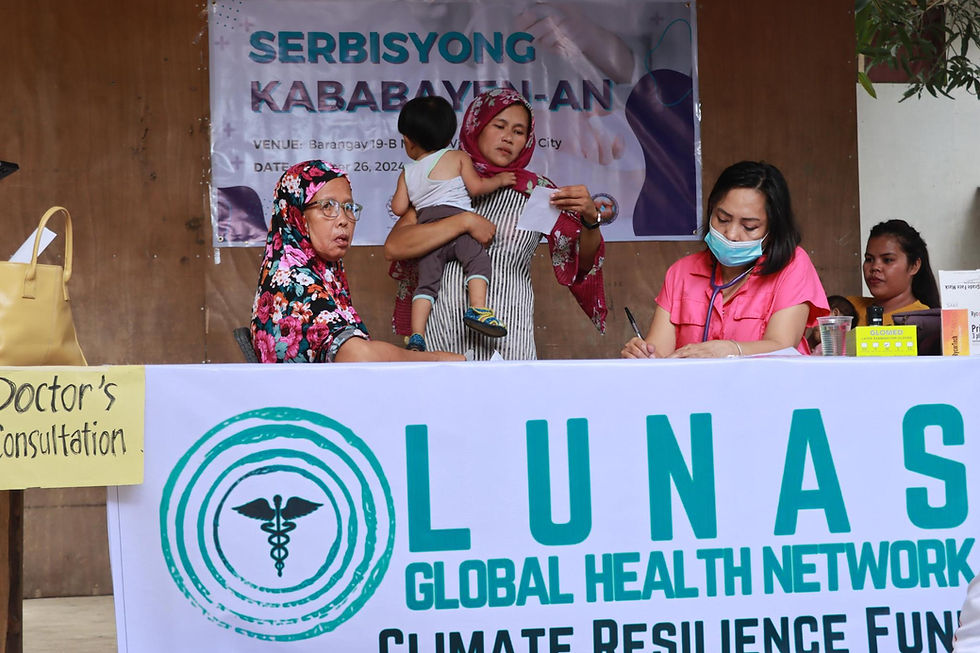Updates on KCEO Partnership in Cambodia
- Lunas GHN

- Jun 8
- 4 min read

Background on Khmer Children’s Education Organization (KCEO)
After surviving the Cambodian Civil War, son of farmers Marin Him returned to his community and noticed a need and desire for education. Having learned English in a refugee camp in Thailand and serving as an interpreter for the UN, Marin sought to offer his skills as a teacher. He invited anyone who wanted to learn to his family home, and as children carried desks out under the shade of a fig tree, the first KCEO classroom was born. Since that day in 2008, Marin has led his community in widening access to education to over 7000 students from 19 villages in their region of rural Cambodia.
Updates from our Partnership
Like many grassroots initiatives, securing funding to meet the needs of a community is a challenging endeavor, with the fate of local programming often in the hands of individual, national, and international funders. While institutional funding for programs like KCEO has been under threat, Lunas has worked together with long-time supporters and visitors to facilitate and garner support from grassroots donors who believe in the mission and impact of KCEO. Despite challenges that the schools have faced, including the growing economic and social crises faced by international and local supporters, we shared earlier this year that funding for KCEO has been secured for the next 2 school years.
From their most recent report, KCEO staff shared how this crucial financial support has been more than just a lifeline – it has enhanced the scope and effectiveness of their mission. Below, we’ve highlighted some of the main activities and achievements reported over the last 6 months.

Skill Building and Livelihood Programming
To date, there are 9 teaching centers with 20 different levels of English classes from beginner to advanced. Over the last 6 months, KCEO’s English program has succeeded in raising the percentage of students with basic English skills by over 20%, from 32.05% to 57.41%, opening up more job prospects as well as access to information for youth.
English isn’t the only second language offered at KCEO. Offering what many Cambodians say are better working conditions, more human rights and labor protections, and higher wages, South Korea is a common destination for Cambodians seeking economic opportunities. To meet popular demand, KCEO offers Korean lessons to young adults which follows the requirements of Korea’s Employment Permit System (EPS) Korean language skills test.
KCEO also provides cultural education in their curriculum to prepare students to adapt to work and life abroad. To highlight the program's efficiency for meeting international job requirements, this year’s first of two exams offered annually saw 26 students pass, immediately qualifying for job applications in Korea. Among the 26, eleven have already secured employment and traveled abroad to start their work.

Another primary activity aiming to supply rural communities with employable skills is computer classes. Students and working adults learn to type, to create, edit, and format documents in Microsoft Word, create charts, manage data, and apply formulas in Microsoft Excel, and design engaging presentations with slides, animations, and visuals in Microsoft Powerpoint. Thanks to those who generously donated to last year’s laptop drive, the KCEO computer room can now accompany 6 more learners at a time.
In addition to being able to continue computer education, KCEO has also recently been able to conduct trainings to build the capacity of its staff and teachers in English, computer skills, and community facilitation. By learning newer, more effective methodologies for teaching English alongside building computer skills, these trainings aim to support the integration of technology into the English learning process. On top of this, staff practice community facilitation skills, supporting their ability to engage with the local communities and implement community-responsive educational programming.

Local Collaboration
Within the surrounding communities, KCEO works closely with local authorities, key partner organizations, and stakeholders to foster cooperative relationships and secure support for project implementations. These relationships allow for collective identification and prioritization of the most vulnerable children (MVCs) to invite to the school. In the last 6 months, community partners and staff received trainings to learn how to engage, mobilize, and identify children more effectively. These trainings are supported by monthly reflection meetings with the staff, teachers, and community partners. In addition, parents, caregivers, youth leaders, and community reading facilitators are also encouraged to be involved with the school, through other regular programming like book lending, home visits, and individualized support for students.

Beneficiary Spotlight
One beneficiary highlighted in the school's most recent report is Boub Leakina, a scholarship student identified by her village. With both of her parents in Thailand seeking work to support the family, she labored in local rice fields to afford school supplies for her siblings, cared for by her grandmother. As she entered grade 9, her grandmother passed away, and she dropped out of school to look for more work. Hearing her story, KCEO reached out to offer her English and Computer classes to continue her education. Since then, Boub has resumed her studies, and hopes someday to become a teacher.
We are grateful to our donors who help us sustain KCEO and its beneficiaries like Ms. Leakina.
Support KCEO
Thank you to all of the generous supporters of KCEO! To make a tax-deductible donation, donate here, or email us if you’d like to make a contribution through an employer or retirement donation program. Follow @lunas_ghn and @kceo_ on Instagram, and sign up to our newsletter here for more updates about KCEO!









Comments